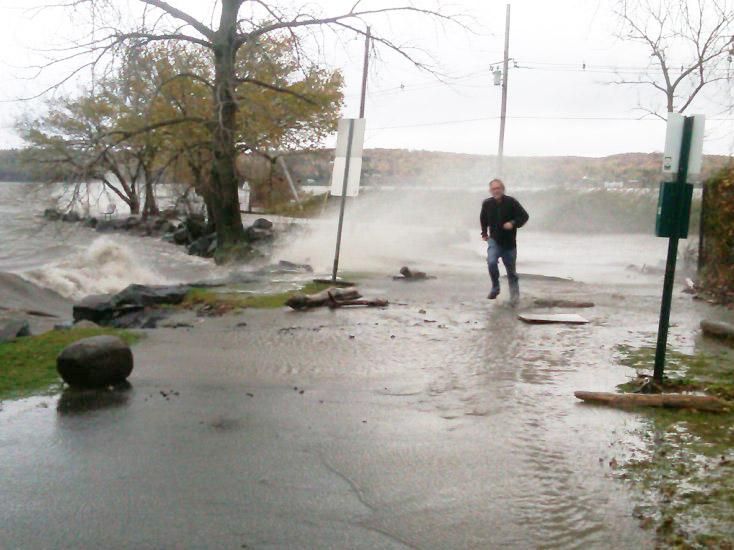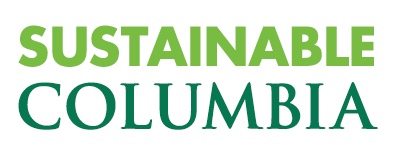Hudson River Lab Works to Revive New York Waterways

Wade McGillis has done research in the Caribbean off Puerto Rico and in watersheds in Haiti, but he always comes back to his laboratory in Piermont, N.Y., on the banks of the Hudson River.
There, a few miles north of Columbia’s Lamont-Doherty Earth Observatory, he monitors the river’s water quality with sensors that stretch from Rockland County to lower Manhattan, tracking the flow of sediment, measuring overflow from waste treatment plants, and monitoring bacteria, nitrates and phosphates.
“You won’t open your mouth in the Hudson River, and that’s symbolic of a lot of things,” says McGillis, an associate research professor at Lamont and also an adjunct professor in the Department of Earth and Environmental Engineering. “We want to figure out if we can restore it to a pristine system. If you don’t know what you’re doing to it, you can’t figure out ways to fix it. ”
McGillis is director of the Center for Rivers and Estuaries, a multidisciplinary group of Columbia scientists—geologists, biologists, climate scientists and others—studying various aspects of these waterways, including the effects of greenhouse gases and other pollutants.
He has a Ph.D. in mechanical engineering from the University of California at Berkeley. After working in Silicon Valley, he decided to take a research fellowship at the Woods Hole Oceanographic Institution, near where he grew up on Cape Cod. He came to Columbia in 2004 and now teaches a course in field methods for environmental engineering at Columbia Engineering and another on the science of sustainable water in the master’s degree program in sustainability management cosponsored by the Earth Institute and the School of Professional Studies.
He takes students to the Gowanus Canal in Brooklyn to see one of the most contaminated waterways in the nation. “I can’t even spell some of what’s in the Gowanus Canal,” he says. “When I go there I almost want to pass out.” He also monitors water quality in the Bronx River as part of a National Science Foundation project and studies marshland in the New York area, much of which has been paved over, to the detriment of the ecosystem.
His research off the coast of Puerto Rico focused on the impact that climate change and other environmental forces have on coral reefs. In Haiti, two months after the devastating 2010 earthquake, he studied the depth and flow of the Les Anglais River and its potential for hydropower. He has gone back to investigate the effects of El Niño.
McGillis headed to the lab in Piermont as Hurricane Sandy approached the New York area in October 2012 to set up equipment on an adjacent pier to capture the storm’s impact, but he had to flee for safety as floodwaters swamped the lab. Thousands of dollars in equipment was lost.
The Hudson River monitoring project is a multi-institutional effort that in addition to Columbia includes the Hudson River Foundation, a nonprofit based in Manhattan; the state Department of Environmental Conservation; the U.S. Geological Survey; the Cary Institute for Ecosystem Studies, an environmental research and education center in Millbrook, N.Y., and the Stevens Institute of Technology in Hoboken, N.J.
The river is cleaner than it was in the past, McGillis says, but still contains some industrial waste, and heat from power plants has changed the ecosystem.
McGillis, in addition to his roles at Columbia, is a key player in Hudson River cleanwater initiatives throughout New York. He leads a program created by Earthwatch, the environmental group, and HSBC, the global bank, that has trained some 250 citizen scientists to measure water quality; he is on the advisory board of Riverkeeper, a Westchester-based nonprofit that promotes clean-water programs; and he has helped develop testing methods and materials for a proposed swimming pool that would float in the Hudson in lower Manhattan and filter river water. The pool is a project of Columbia alumnus Dong-Ping Wong (GSAPP’06).
“All urban waterways are contaminated, but it doesn’t have to be that way,” McGillis says. “The more we monitor our systems, the better position we are in to find the right solutions to preserve the environment and avoid health hazards.”
